Join More Than 50,000+ Subscribers and get latest camera news and rumors
NEW CAMERA VIDEOS ON YOUTUBE
|
By admin, on April 13th, 2023
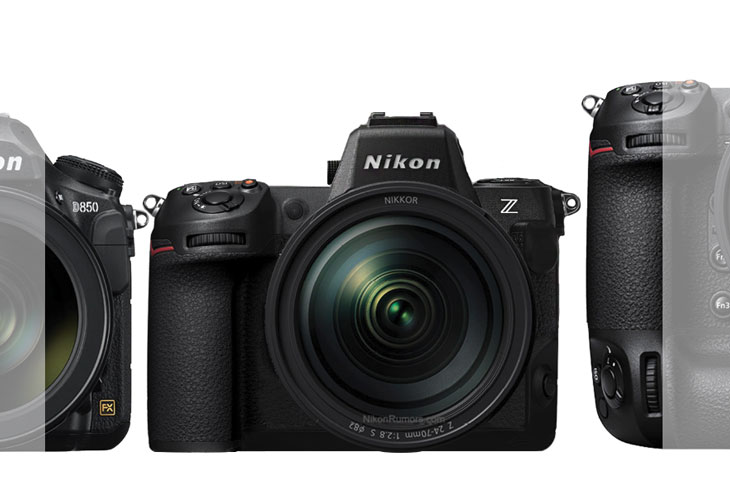
According to the latest rumors that surfaced over the rumor mills, we can expect an announcement from Nikon in Eary May 2023. That’s the only piece of information we have from the sources of the rumor mill.
Now, the big question is what comes next? We have rumors about the Nikon Z8 camera, lenses, and much more.
We also know that Nikon Never does a direct announcement of their PRO Series camera bodies, and similar cameras like Nikon Z8 should have a development announcement first, and after a month of a gap we have its full announcement.
We have had rumors in past related to Nikon DX 12-28mm Lens and 200-600mm Lenses. We will post an update soon as we get it.
Follow us on our social pages FACEBOOK | TWITTER | INSTAGRAM to get live news + Nikon Rumors 24X7
source NR.com
By admin, on April 13th, 2023
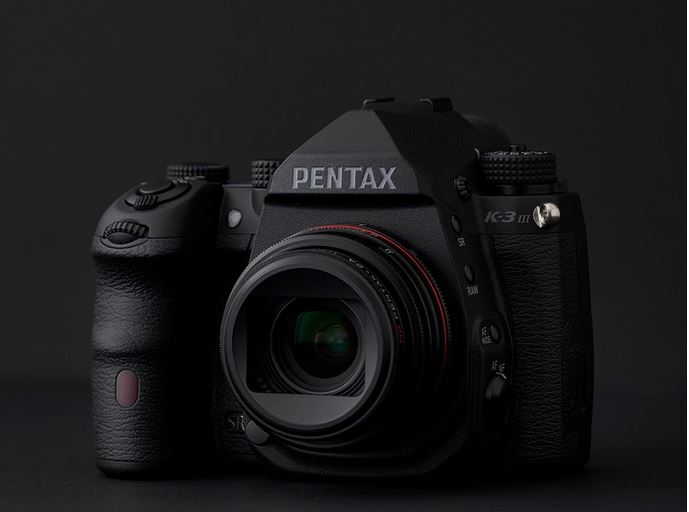
PENTAX K-3 Mark III B&W ONLY digital SLR aka Monochrome means the camera features a customer-developed sensor without any color filter array, so its a sensor without demosaicing algorithm, now every color sensor-based camera has the demosaicing algorithm, it is used to process the images, to reconstruct a full-color image from the incomplete color samples output from an image sensor. So, if you are a B&W photography lover and want to extract exceptional details from a given seen that a color filter-based Bayer sensor is unable to do then the PENTAX K-3 Mark III Monochrome is made for you.
Pentax K-3 II Monochrome DSLR at B&H Store
Ricoh announces PENTAX K-3 Mark III Monochrome digital SLR camera
PENTAX K-3 Mark III Press Release
DSLR with exclusively-designed image sensor delivers the ultimate in black-and-white photography
PARSIPPANY, NJ, April 12, 2023 — Ricoh Imaging Americas Corporation today announced the PENTAX K-3 Mark III Monochrome camera, exclusively designed to capture black-and-white images. The only monochrome-specific digital SLR camera currently on the market, it captures high-resolution images rich in gradation, enabling users to express a distinct view of the color-rich world in high-quality black-and-white images.
“The concept of a monochrome-specific digital SLR camera attracted a great deal of attention and interest from photographers who participated in an online fan event held in November 2021,” said Ken Curry, president, Ricoh Imaging Americas. “PENTAX has since conducted extensive research on the development of a commercial product based on this concept and we’re excited to announce it today.”
The new model’s design is based on the PENTAX K-3 Mark III — the flagship model of PENTAX’s APS-C-format series that integrates remarkable imaging performance and a host of advanced features in a compact, durable body — while totally redesigning and optimizing the imaging characteristics by adding a new, monochrome-specific image sensor with approximately 25.73 effective megapixels. A typical color image sensor composes a black-and-white image by converting the color data to monochrome. This new custom sensor does not have to convert the any data because it can reflect the brightness obtained by each pixel in the image, thus producing extra-fine sharpness in images that only the monochrome-specific sensor can deliver.
The PENTAX K-3 Mark III Monochrome features three Custom Image modes exclusively designed for black-and-white photography to provide distinctive finishing touches. In addition to Standard mode, it offers Hard mode to produce high-contrast images and Soft mode to create high-key, low- contrast images. Each mode allows minute adjustment of parameters such as tone, key, contrast and sharpness so that users can personalize their images with the desired finishing touch.
The exterior design of the camera has also been customized to reflect its monochrome capabilities. Design features include white backlight illumination on the LCD data panel, “Monochrome” lettering printed on the upper-left shoulder of the back panel, a menu screen featuring a black-and-white visual scheme as default, and icons printed on buttons and switches across the camera’s exterior finished in three shades of gray.
1The PENTAX K-3 Mark III Monochrome camera body will be available late April at www.us.ricoh-imaging.com as well as at Ricoh Imaging-authorized retail outlets for the manufacturer’s suggested retail price of $2,199.95.
| Main features of the PENTAX K-3 Mark III Monochrome |
Monochrome-specific CMOS image sensor
To optimize the quality of monochromatic images, the camera incorporates a monochrome- specific, APS-C-format CMOS image sensor free of an AA (anti-aliasing) filter with approximately 25.73 effective megapixels. Typical color image sensors are designed to receive light passing through red (R), green (G) and blue (B) color filters, so each pixel detects only one color-data component. To compose a monochrome image, color sensors must convert color data into monochromatic data by interpolating the color data they collect. The new monochrome-specific image sensor, however, can faithfully reflect the brightness data obtained by each pixel in the image — without the interpolation process — to produce extra-fine monochromatic expression, in images high in resolution and rich in gradation.
Image quality exclusively designed for monochrome photography
The image quality produced by the original PENTAX K-3 Mark III was thoroughly re- evaluated and totally redesigned to optimize the imaging characteristics of the new monochrome-specific image sensor. The result is highly sensitive expression with a natural bokeh (defocus) effect, rich gradation and extra-fine sharpness — an image only the monochrome-specific image sensor can deliver.
A selection of monochrome-specific finishing touches
The PENTAX K-3 Mark III Monochrome provides three Custom Image modes exclusively designed for monochrome photography to provide distinctive finishing touches. In addition to Standard mode, it also provides Hard mode to produce high-contrast images, and Soft mode to create high-key, low-contrast images. Each mode provides minute adjustment of parameters such as tone, key, contrast and sharpness. This allows the photographer to personalize their images with the desired finishing touch.
Exterior design reflecting the monochrome photography concept
The PENTAX K-3 Mark III Monochrome provides white backlight illumination on the LCD data panel positioned on its upper panel, while featuring “Monochrome” lettering printed on the upper-left shoulder of the back panel. Its menu screen features a black-and-white visual scheme as default, while the SR (Shake Reduction) badge is finished in silver. The icons printed on buttons and switches across the camera’s exterior are finished in three shades of gray to assist the users with their camera operation. All in all, the concept of monochrome photography is evident throughout the camera body.
By admin, on April 12th, 2023
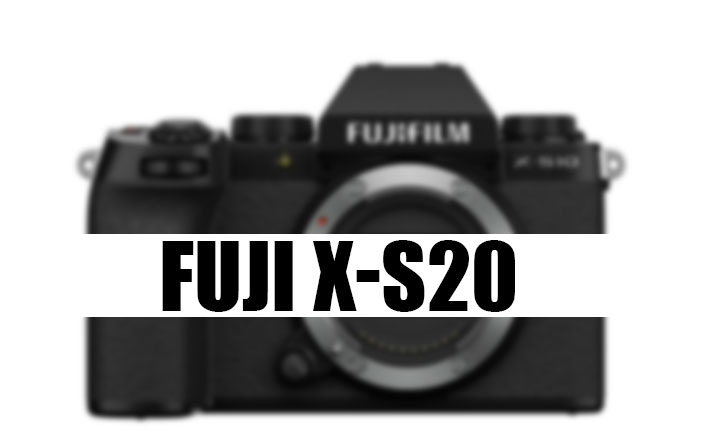
According to the latest rumors from rumor mills, Fuji will be releasing a brand new camera on Fuji X-Summit, which is about to happen on May 24, 2023. The other big possibility apart from the Fuji X-S10 camera is Fuji GFX 50 R II announcement.
 We all know the GFX 50R is discontinued back in Sep 2021, and the stock pipelines of the camera are almost empty. And the GFX 50S II is almost a year old (announced back in Sep 2021). So, now it’s the perfect time to introduce the Fuji GFX 50R to gain more medium format market share with an affordable price tag and trimmed out the core specifications. We all know the GFX 50R is discontinued back in Sep 2021, and the stock pipelines of the camera are almost empty. And the GFX 50S II is almost a year old (announced back in Sep 2021). So, now it’s the perfect time to introduce the Fuji GFX 50R to gain more medium format market share with an affordable price tag and trimmed out the core specifications.
We will post an update as soon as we get any new information
Follow us on our social pages FACEBOOK | TWITTER | INSTAGRAM, –> See More Fuji Rumors Or subscribe to us via Email
By admin, on April 9th, 2023
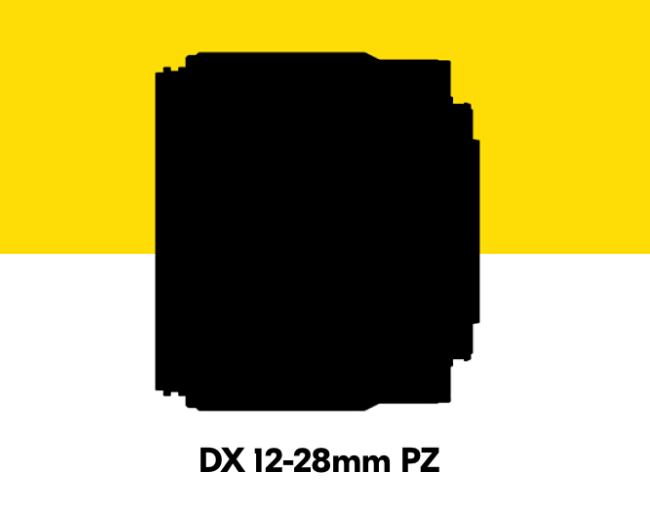
Nikon Z DX 12-28mm Lens Announcement Soon – Take a look at the Lens details below
- Type: Nikon Z-series mount
- Format: DX
- Focal length: 12 – 28mm
- Maximum aperture: f/3.5 to 5.6
- Minimum aperture: f/16 to 25
- Lens structure: 12 lenses in 11 groups (including 1 ED lens and 1 aspherical lens)
- DX format: 99° to 53°
- Focus system: Internal focusing system
- Minimum focusing distance (measured from the focal plane): 0.19m at all zoom positions
- Maximum reproduction rate: 0.21x
- VR (Vibration Reduction) image stabilization: Yes
- Lens shift using voice coil motors (VCMs)
- Number of diaphragm blades: 7 (round aperture)
- Aperture range:
- 12mm zoom position: f/3.5 to 16
- 28mm zoom position: f/5.6 to 25
- Filter size: 67 mm
- Dimensions: 72mm x 63.5mm
- Weight: approx. 205g
- Autofocus: Yes
- Internal focus: Yes
- Focusing: Automatic, Manual
- Supplied accessories: LC-67B Lens Cap (front cap), LF-N1 Lens Cap (back cap)
A few days ago we got an update that Nikon, Nikon Z 200-600mm Lens Announcement Soon
source weibo.com
By admin, on April 7th, 2023
Finally, the wait is over and Nikon will soon announce the Z 200-600mm Lens. In a recent tweet How-to-fly, shared the following information
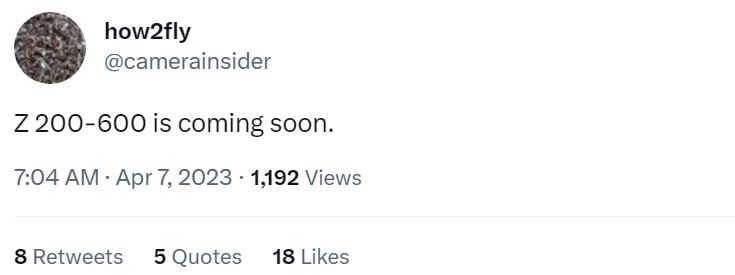
See all updates related to Nikon Z8
Follow us on our social pages FACEBOOK | TWITTER | INSTAGRAM to get live news + Nikon Rumors 24X7
By admin, on April 5th, 2023
Let’s compare the Sony FX 30 camera against the recently announced Sony ZV E1. Sony FX 30 camera has a bit more compact body and let’s discuss the features that we exclusively have in the FX 30
Also, see – Sony ZV-E1 vs Sony A74
1.Sony ZV-E1 advances over Sony FX30
1. Sony ZV-E1 Full Frame Sensor: The biggest advantage you have with the Sony ZV-E1 camera is Sony’s A7 S III 12mp ultra-low light-sensitive sensor that produces exceptional video quality even when used in extremely low light conditions. Having a Full-frame CMOS sensor of 12MP doesn’t allow the camera to move into the oversampling mode, resulting in NO Rolling shutter effect even when uses at higher shutter speed or MAX frame rates.
 Sony ZV-E1 paired with 28-70mm Lens
- Sony ZV-E1 Best Lenses for Content Creators – B&H Store | Amazon.com
- Sony ZV-E1 Best Lenses for Cinematographers – B&H Store | Amazon.com
2. ISO up to 409600 vs 102400: On the other side, we have the Sony FX30 camera that uses Sony’s 26-megapixel APS-C CMOS sensor which is quite useful when you are working in a controlled light environment. Now, being a pro cinema camera for beginners the camera also features dual native ISO but despite having all the technological advancement in FX30, have in this camera you cannot fight with the hardware (or the very physical nature of the sensor being used inside this camera), it allows capturing method details for better details, so low light performance wise ZV-E1 is a clear winner.
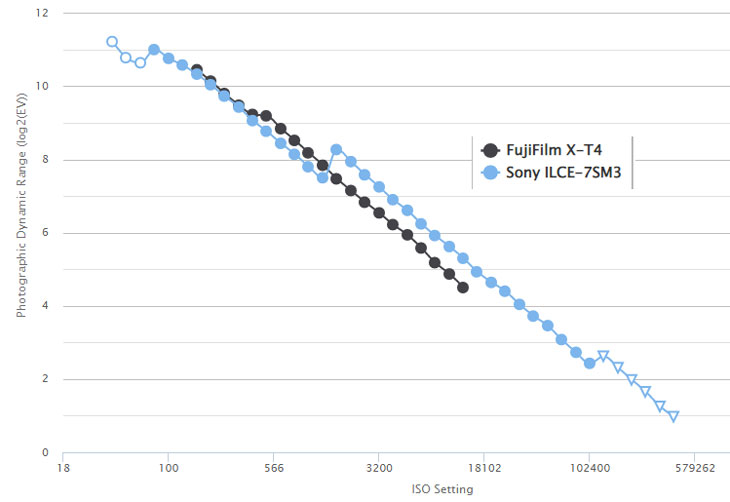 In the test above we have selected the Sony A7S III camera, as we know the Sony ZV-E1 camera uses the same sensor as we have seen on the Sony A7S III. And since we don’t have the test data of the Sony FX30 camera. so I have picked up a 26MP X-Trans BSI CMOS Sensor of the X-T5 to get a good idea of what the test will look like. Be assured we will update this test once the Sony FX30 data becomes available 3. Sony ZV-E1 Dynamic Range: The other biggest advantage that we get apart from low light performance is its dynamic range. With the Sony Z1 camera, you can extract 15 plus stops of dynamic range from your camera so it’s a perfect camera for shooting uncontrol light environment. And when you want to extract the maximum dynamic range from a given scene.

4. The artificial intelligent chip inside the camera: Human poses estimation using a skeleton-based model: With its innovative AI processing unit, the ZV-E1 uses subject form data to accurately recognize movement, providing an improvement of approx. 60% in human eye recognition14. Human pose estimation technology recognizes body and head position, so you can even track a subject facing away from the camera or wearing a mask.
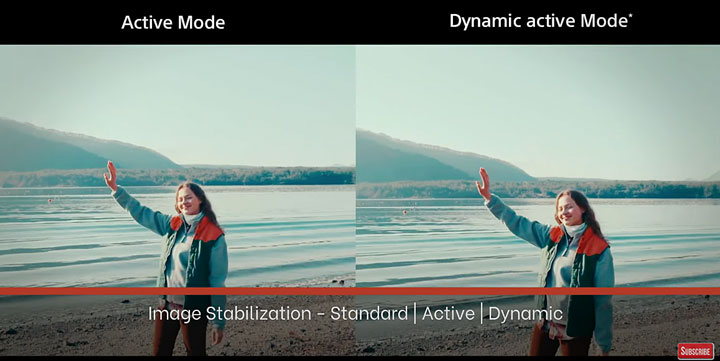
5. A compact, 5-axis stabilization unit and gyro sensors with optimized algorithms achieve up to 5.0-step stabilization. The in-body image stabilization of the camera provides effective stabilization with a wide range of lenses, including E-mount lenses that do not include their stabilization. Dynamic active Mode stabilization is approximately 30% more effective than what Active Mode provides. This makes it easier than ever to shoot smooth, stable footage while moving around for bold, dynamic expression.
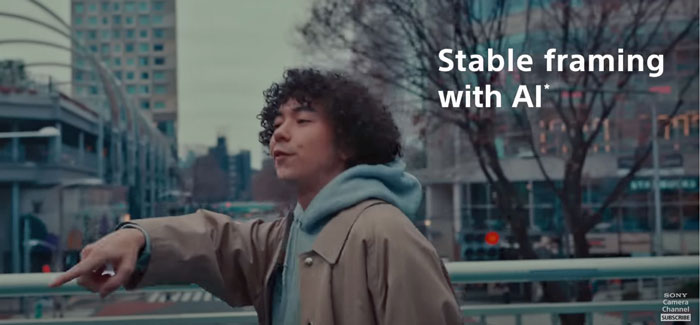
6. The ZV-E1 also boasts a Framing Stabilizer that uses advanced AI-based subject recognition in conjunction with the camera’s Dynamic active mode image stabilization to automatically keep the subject’s position in the frame constant.
7. With the Multiple Face Recognition setting, the camera can automatically track multiple subjects within the frame. This feature helps to stabilize the framing and ensure that the subject remains in the frame. The AI processing unit can even differentiate between multiple subjects having different postures and recognition of individual faces so that tracking reliability is achieved in challenging situations such as when a subject’s face is tilted, in shadow, or backlit

8. The Product Showcase Setting includes an AF tracking switch that allows for consistent bokeh levels between the product and the subject, even when switching between different subjects.
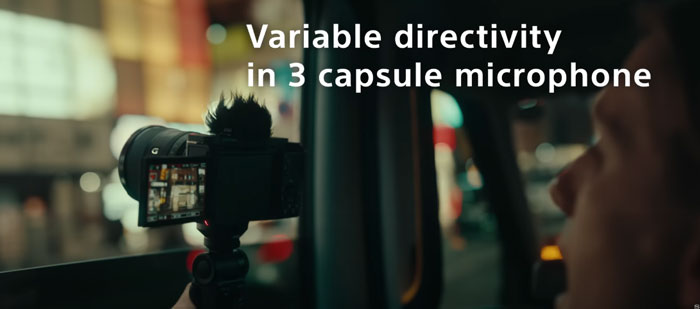
9. The Intelligent 3 Capsule Microphone captures clear audio, including the voice of your main subject. Depending on your shoot, you can set the microphone’s directivity to Front, Rear, All Directions, or Auto18. The camera also includes a Multi-Interface (MI) shoe with a digital audio interface and mic and headphone jacks offer expanded audio capabilities.
2. Sony FX30 advantages over ZV-E10
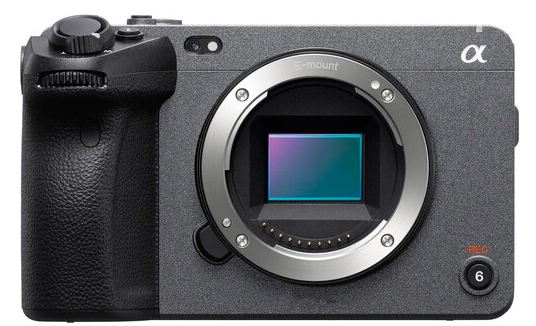
10. Devil lies in details: Why sometimes having a higher resolution APS-C sensor, is better than a lower resolution Full frame sensor. Sony FX30 does 26 MP Oversampling to produce exceptional 4k in details, so you have to understand this the Sony FX30 camera uses 26MP resolution to generate 4K files and the Sony ZV-E1 uses a 12MP sensor to generate 4K files, now if you are working in the controlled light environment the Sony FX30 4k (file will showoff more details of a given scene compared to Sony ZV-E1 12MP 4k files. But that also depends on several factors like the type of lenses used and the light environment.
Sony FX30 camera is built for professionals, in the ZV-E1 camera u do get excellent hardware inside, but the controls are simplified for beginners and you will miss a lot of features, that were maybe essential for your workflow.
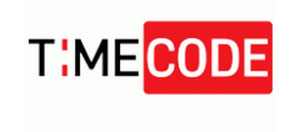
11 . TIME CODE: We have TIME CODE in the Sony fx30 camera, a time code functionality that is highly important for the synchronization of multiple cameras during a professional shoot. Time code is like a special signal generated along with the video reels that help find a specific moment or two to sync two or more two different videos seamlessly without any error.. It’s called SMPTE because the Society of Motion Picture and Television Engineers made it.
11. You get 16 BIT RAW via Full-Size HDMI: The second thing and of course the most important is 16-bit RAW output which is not possible with the Sony ZV E1 camera which is made for content creators
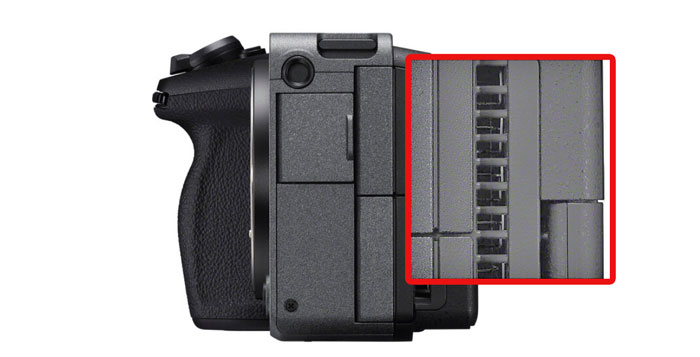
12. No Overheating in Sony FX30: The next BIG thing that you may miss in ZV-E1, is the external fan. The Sony FX 30 camera features an external fan so you don’t have any overheating issues. The biggest problem is Sony has trimmed down the cooling system of the Sony A7 S3 camera and we have a very weak heat sink unit in the new ZV E1 camera so if you are living near the equator or in Asian countries with variable weather conditions summers are very hot temperature raises to 40-degree centigrade so in that situation if you shoot outdoors like you are a travel blogger or you are a wedding cinematographer like to use your camera mostly outdoor then you have to be very careful before buying the Sony zv E1 camera
CROPS
- The much more significant crop comes in 120p mode, where the camera crops in to a 3840 x 2160 region of the sensor, giving a 1.62x crop.
- While using 4k UHD @ 120fps in ZV-E1 you have to face 10% crop
3. Sony ZV-E1 vs Sony FX30 – The Main Differences
|
Sony ZV-E1 |
Sony FX30 |
| Lens Mount |
Sony E |
Sony E |
| Sensor Resolution |
Effective: 12.9 Megapixel (4240 x 2832) |
Yes, with Autofocus Support |
| Sensor Type |
35.6 x 23.8 mm (Full-Frame) CMOS |
Actual: 27 Megapixel
Effective: 26 Megapixel (6192 x 4128) |
| Image Stabilization |
Digital, 5-Axis |
23.3 x 15.5 mm (APS-C) CMOS |
| Built-In ND Filter |
None |
None |
1. Exposure Control
|
Sony ZV-E1 |
Sony FX30 |
| Shutter Type |
Electronic Shutter |
Electronic Shutter |
| Shutter Speed |
1/8000 to 30 Second
1/8000 to 1 Second in Movie Mode |
1/8000 to 30 Seconds in Photo Mode
1/8000 to 1/4 Second in Video Mode |
| ISO Sensitivity |
Photo
80 to 102,400 (Extended: 80 to 409,600) |
100 to 32,000 (Extended: 50 to 102,400) |
| Metering Method |
14+ Stops |
14 Stops |
Video Mode | Frame Rates | Recording options
|
Sony ZV-E1 |
Sony FX30 |
| Internal Recording Modes |
RawXAVC HS 4:2:0 10-Bit
UHD 4K (3840 x 2160) at 50/59.94 fps [45 to 150 Mb/s]
UHD 4K (3840 x 2160) at 23.98 fps [30 to 100 Mb/s]
RawXAVC HS 4:2:2 10-Bit
3840 x 2160 at 50/59.94 fps [100 to 200 Mb/s]
RawXAVC S 4:2:2 8-Bit
UHD 4K (3840 x 2160) at 50/59.94 fps [100 to 200 Mb/s]
UHD 4K (3840 x 2160) at 25/29.97 fps [140 Mb/s]
RawXAVC S 8-Bit
1920 x 1080p at 100/120 fps [60 to 100 Mb/s]
1920 x 1080p at 50/59.94 fps [25 to 50 Mb/s]
RawXAVC S 10-Bit
1920 x 1080p at 23.98/25/29.97/50/59.94 fps [50 Mb/s]
RawXAVC S-I 10-Bit
3840 x 2160 at 59.94 fps [600 Mb/s]
1920 x 1080p at 59.94 fps [222 Mb/s] |
XAVC HS 4:2:2 10-Bit
UHD 4K (3840 x 2160)
XAVC S-I 4:2:2 10-Bit
UHD 4K (3840 x 2160)
1920 x 1080p from 1 to 240 fps
XAVC S
UHD 4K (3840 x 2160)
1920 x 1080p from 1 to 240 fps
XAVC Proxy
1920 x 1080
1280 x 720 |
| External Recording Modes |
None |
4:2:2 10-Bit via HDMI
UHD 4K (3840 x 2160) at 23.98/25/29.97/50/59.94 fps
ProResRAW 16-Bit via HDMI
4672 x 2628 at 23.98/25/29.97/50/59.94 fps |
| Fast-/Slow-Motion Support |
Yes |
Yes |
| User Uploadable LUT |
Yes |
Yes |
| Cinema Menu Interface |
Yes |
Yes |
| IP Streaming |
None |
2-Channel 24-Bit LPCM Audio
4-Channel 24-Bit LPCM Audio |
| Built-In Microphone Type |
AI-powered 3-capsule design |
Stereo (classical) |
2. Interface
|
Sony ZV-E1 |
Sony FX30 |
| Media/Memory Card Slot |
Single Slot: SD/SDHC/SDXC (UHS-II) |
Dual Slot: CFexpress Type A / SD |
| Video I/O |
Micro HDMI
|
1 x HDMI 2.0 Output |
| Audio I/O |
1 x 1/8″ / 3.5 mm TRS Stereo Microphone Input
1 x 1/8″ / 3.5 mm TRS Stereo Headphone Output |
2 x XLR / 1/4″ TRS Combo Microphone (+48 V Phantom Power) Input on Included Handle
1 x 1/8″ / 3.5 mm TRS Stereo Microphone Input on Camera Body
1 x 1/8″ / 3.5 mm TRS Stereo Headphone Output on Camera Body |
| Power I/O |
1 x USB-C Input |
1 x USB-C Input |
| Other I/O |
1 x USB-C (USB 3.2 / 3.1 Gen 1) Data Input/Output (Shared with Power Input)
1 x Sony Multi/Micro-USB Control |
1 x Sony Multi/Micro-USB (Timecode)
1 x USB-C (USB 3.2 / 3.1 Gen 2) |
| Wireless |
Wi-Fi, Bluetooth |
2.4 / 5 GHz Wi-Fi 5 (802.11ac) Control
Bluetooth |
| Mobile App Compatible |
Yes
*As of March, 2023: Check with manufacturer for the most up-to-date compatibility |
No
*As of February, 2023: Check with manufacturer for the most up-to-date compatibility |
| Global Positioning (GPS, GLONASS, etc.) |
None |
None |
3. Focus
|
Sony ZV-E1 |
Sony FX30 |
| Focus Type |
Auto and Manual Focus |
Auto and Manual Focus |
| Focus Mode |
Automatic, Direct Manual Focus, Manual Focus |
Automatic, Continuous-Servo AF, Direct Manual Focus, Manual Focus, Single-Servo AF, Touch AF & Shutter |
| Autofocus Points |
Photo
Phase Detection: 759
Video
Phase Detection: 627 |
Video
Phase Detection: 495 |
| Autofocus Sensitivity |
6 to +20 EV |
-3 to +20 EV |
Verdict: Sony ZV-E1 camera and FX30 orientation are completely different, If you create a vlog or shoot solo content then undoubtedly the best camera is Sony ZV-E1. But, at the same time, u have to deal with overheating issues if ur using your camera outside overheats quickly as per the latest reports we have from its reviewers. Sony FX30 is made for professionals under budget, if ur thinking about starting your carrier in cinematography, or short films, then with FX30, u will have the basic training high to handle cinema cameras.
Also, see – Sony ZV-E1 vs Sony A74
- Sony ZV-E1 Best Lenses for Content Creators – B&H Store | Amazon.com
- Sony ZV-E1 Best Lenses for Cinematographers – B&H Store | Amazon.com
By admin, on March 31st, 2023
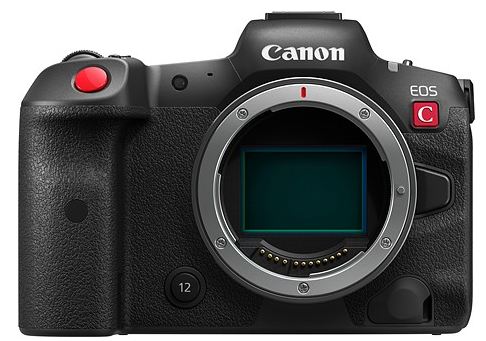
Canon EOS R5 C is now approved for Netflix productions, joining a long list of Canon EOS cameras approved for the streamer. A new firmware update enhances operation and image quality.
Canon EOS R5 C Now Approved for Netflix Productions
New Firmware Update Enhances Operation & Image Quality of the Hybrid Full-Frame Mirrorless Camera
Canon’s EOS R5 C has been added to Netflix’s list of approved cameras. This allows filmmakers to use Canon’s full-featured, hybrid full-frame mirrorless camera for Netflix productions.
Version 1.0.3.1 firmware elevates the overall image quality and camera operability for content captured by filmmakers and creators using the EOS R5C.
The EOS R5 C approval brings the number of Canon Cinema EOS camera models approved for use on Netflix productions to eight.
Canon Cinema EOS camera models on the Netflix approved camera list include:
- Canon EOS R5 C
- Canon EOS C500 Mark II
- Canon EOS C300 Mark III
- Canon EOS C70
- Canon EOS C300 Mark II
- Canon EOS C700 FF
- Canon EOS C700
- Canon EOS C500
The new firmware update strengthens Canon’s commitment to the filmmaking and content creation market.
To download the new firmware update, please visit EOS R5 C Firmware Version 1.0.3.1
|
KEEP THIS BLOG ALIVE - Support New Camera Buy Canon Lenses, Buy Music CD or Digital Camera at amazon it helps this site, and you do not pay anything extra, it is just a way to help support this site.

|




 We all know the GFX 50R is discontinued back in Sep 2021, and the stock pipelines of the camera are almost empty. And the GFX 50S II is almost a year old (announced back in Sep 2021). So, now it’s the perfect time to introduce the Fuji GFX 50R to gain more medium format market share with an affordable price tag and trimmed out the core specifications.
We all know the GFX 50R is discontinued back in Sep 2021, and the stock pipelines of the camera are almost empty. And the GFX 50S II is almost a year old (announced back in Sep 2021). So, now it’s the perfect time to introduce the Fuji GFX 50R to gain more medium format market share with an affordable price tag and trimmed out the core specifications.
















